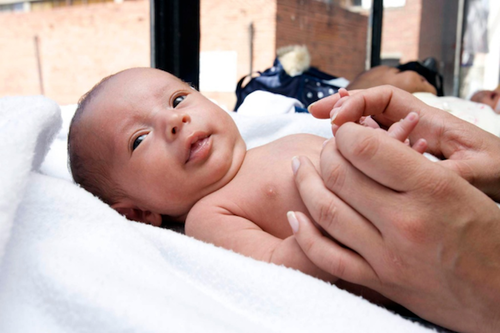
In the U.S., current research shows that as many as one in three people were abused or neglected as children. Maltreatment can injure and kill children and significantly harm their mental, physical and social health as they grow.
Susan Mason, assistant professor in the University of Minnesota School of Public Health, studied data on infants who were hospitalized for injuries that are common in instances of physical abuse and neglect. Her findings were recently published in The Annals of Epidemiology.
“It is clear that maltreatment is a significant public health issue and prevention should be a major priority, yet we currently have little public health infrastructure or research focused on maltreatment prevention,” said Mason. “A crucial starting point is to do a better job of measuring maltreatment so that we know who is at risk and why they are at risk, and ultimately find ways to prevent it.”
Some data on maltreatment is available through state child protective services systems, but the usefulness of that information is limited by inconsistencies. Examples of such inconsistencies are differences in how states define abuse, or changes in the size of and funding of their programs.
To gather higher quality data, Mason looked at birth certificate and discharge records from all hospital births of New York City residents from 1995 to 2004 and any subsequent infant hospitalizations within 12 months after delivery. Probable cases of infant maltreatment were identified by scanning patient records for 33 injury diagnosis codes highly correlated with abuse or neglect.
The results showed:
- Compared to infants born at term, infants who were born preterm (before 37 weeks of gestation) had 1.6 times the risk of being readmitted to the hospital within the first year of life for an injury suggestive of maltreatment.
- Infants with long neonatal intensive care unit stays had 1.8 times the risk of being readmitted to the hospital within the first year of life compared to infants with no stay.
The results suggest that families who experience these challenges at birth might benefit from targeted supports.
“It is possible that these early challenges at birth contribute to the risk of later maltreatment because they are highly stressful and/or may disrupt normal parent-child attachment,” said Mason. “If this is the case, then intervening to reduce stress and focus on bonding in these families may be important.”
Mason said other possible explanations for why preterm infants may be more likely to be maltreated include being born to parents with certain problems, such as drug abuse disorders, who may face both challenges at birth and difficulties parenting.
The findings reinforce that researchers, clinicians and policymakers should be aware of maltreatment as a major public health issue. Mason says states and communities can aid the research by maintaining and creating new ways to link data. Linking data—such as hospital records and birth certificates—helps researchers to completely see, understand and measure maltreatment, which means they can later offer recommendations that accurately inform policymakers in their efforts to create interventions to stop it.
Mason is continuing her research on health impacts of childhood abuse and neglect as well as the risk factors for child abuse and neglect with the goal of advancing maltreatment prevention by informing policies, education or targeted supports for families.
Mason’s study was supported by the Building Interdisciplinary Research Careers in Women’s Health Grant from the Eunice Kennedy Shriver National Institutes of Child Health and Human Development, the Office of Research on Women’s Health, and the National Institute on Aging.
- Categories:
- Health




